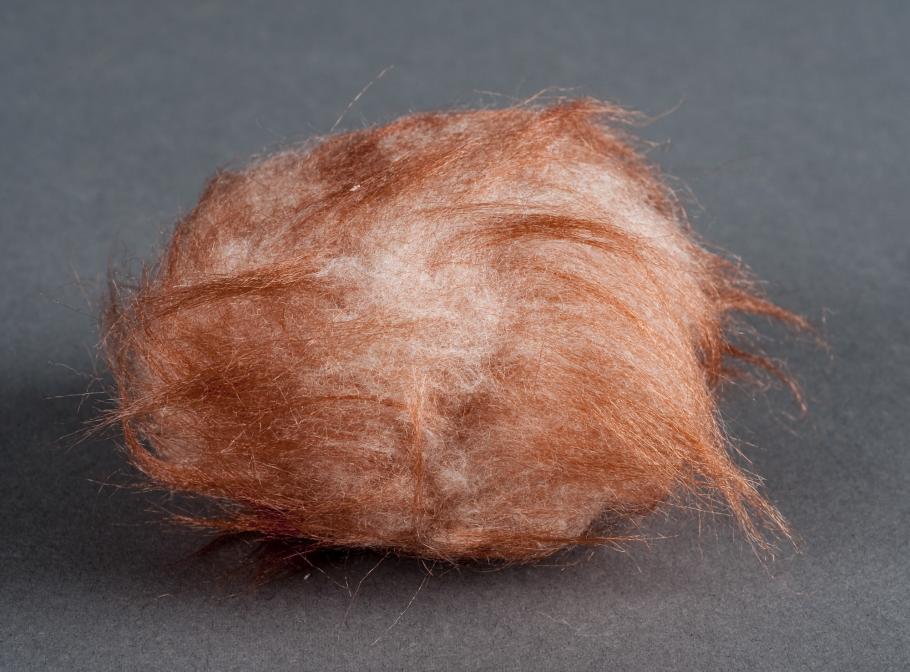Stardate 1604.01: At 12:01 am EDT this morning, the National Air and Space Museum began breeding tribbles. This bold, innovative, not-at-all-ill-advised experiment will run for 24 hours, until 11:59 pm tonight, allowing Museum specialists to study the galaxy’s most adorable ecological disaster in greater detail than ever before. The tribble trial utilizes five original specimens of the species Polygeminus grex from the original Star Trek television series, donated to the Museum in 1973.
Today’s tribble breeding pilot project is in celebration of Star Trek’s 50th anniversary. “After 50 years, we decided it was time to bring the tribble back! So, we worked with several specialized veterinary schools and zoos in order to create a special diet and then it was easy—we just fed them and let nature take its course,” said Dr. Margaret Weitekamp, curator of the Museum’s Social and Cultural Dimensions of Spaceflight collection. A 24-hour, live tribble cam will monitor the project. The Museum is also completing conservation work on the original 3-meter (11-foot) studio model of the Enterprise used in all 79 episodes of the original series. Museum conservators are working to stabilize the model and return it to its appearance from the 1967 episode The Trouble with Tribbles. The Enterprise will go back on public display in the new Boeing Milestones of Flight Hall in time for the Museum’s 40th birthday in July.
Tribbles are insatiable eaters, devouring any available foodstuff in amounts seemingly disproportionate to their mass. They also propagate at an exponential rate. On their homeworld of Iota Germinorum V, the tribble population is kept in check by numerous tribble-vorous reptiles. But the species has no known natural predators at the Museum, hence the strict 24-hour limit on the breeding program. “Any longer and we could have a population explosion on our hands,” said STEM in 30 host Marty Kelsey, who calculated that the tribble tribe could reach 1,771,561 fur-balls in just 72 hours, adding that, “things could get hairy in a hurry without the proper controls, even in one of the world’s most popular museums.” For comparison, the National Air and Space Museum welcomed 8.5 million humans in 2015. Tribbles have a soothing effect on humans, purring and cooing when stroked. This makes them attractive as pets, despite their rapacious rate of reproduction. General Jack Dailey, the Museum’s John and Adrienne Mars Director, agreed, “I was skeptical. I’m more of a dog person. But now that they’re here, I’ve warmed up to these little critters. The whole staff is taking to them quite well. With the busy, everyday challenges of running one of the world’s most popular museums, the tribbles seem to have a calming effect. They’re a wonderful work companion.” Klingons are a notable exception to the tribbles’ tranquilizing effects, and the two species clash violently in close quarters. Klingons still sing songs of the Great Tribble Hunt, an attempt to rid the galaxy of their vexing enemy once and for all. The program has already paid dividends, revealing an alleged Klingon spy operating within the Museum for decades. The accused agent, Chief Curator Peter Jakab, denies charges of espionage but became noticeably defensive when asked about his lack of distinctive Klingon forehead ridges. “We do not discuss it with outsiders,” said the renowned aviation historian and presumed extraterrestrial warrior, likely en route back to Kronos. Apart from tracking the tribble’s prodigious propagation, the program will explore practical uses for the creatures. Previous proposals include military and intelligence-gathering applications (such as a tribble bomb or Klingon detector) or as a viable source of food. The menu of Paris’ Café des Artistes includes Tribbles dans les Blankettes (tribbles in a blanket), though some have found the dish gauling. Others have suggested that they be considered as souvenirs for Museum visitors. Detractors consider the creatures about as useful as an ermine violin, soft and furry with a pleasing sound but serving no particular purpose. But while they neither toil nor spin, tribbles have a bright future in sustainable energy, according to STEM in 30 host Beth Wilson. “When you shuffle your socks across the carpet and then shock your brother with the built-up static electricity, that’s the triboelectric effect,” she explained. “The tribbles’ triboelectric potential could provide an energy source that’s 100% clean, apart from the shedding.” UPDATE: At press time, the number of tribbles has exceeded the Museum’s expectations and contingency plans are in effect. Dr. Weitekamp is unavailable for comment, and is working with contractor Cyrano Jones to acquire a supply of glommers, creatures specially designed to devour surplus tribbles. Preparations are also being made to transport excess specimens to the Smithsonian’s National Zoological Park. Asked for comment, a Zoo spokesperson said that it would be “no tribble at all. How many could there be?” This post's author, Nick Partridge has not been seen since tribbles overran the communications office. He was last spotted wearing a red shirt.
